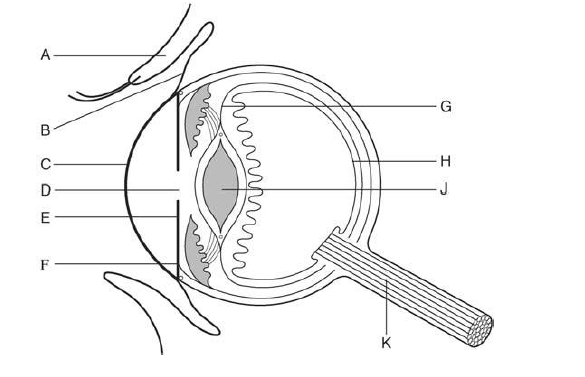
Carbohydrate metabolism essentially refers to the metabolism of glucose and of substances related to glucose in their metabolic processes. In mammals, dietary carbohydrates provide over 50% of energy needs for maintenance, growth and production. Glucose is a primary energy sources for certain animal tissues (e.g. brain) and a precursor for lactose synthesis in the mammary gland
In monogastrics like pig, horse and humans, feeds rich in starch are the major sources of carbohydrates whereas in ruminants fibrous feeds containing cellulose and hemicelluloses and grains rich in starch are the primary carbohydrate sources. In monogastrics most dietary carbohydrates are hydrolysed to monosaccharides in the small intestine, whereas ruminants have most of their dietary carbohydrates (e.g. starch and cellulose) fermented in the rumen by microbes, and only 5-20% of consumed dietary carbohydrates are digested in the small intestine. The major source of energy to ruminants are therefore the volatile fatty acids (VFA) absorbed from rumen and other parts of the digestive tract. Glucose, on the other hand is the major source of energy for non-ruminants (monogastrics).
Gluconeogenesis is the formation of glucose from non-carbohydrate precursors such as lactate, pyruvate, glycerol and certain amino acids. It takes place in the liver by means of deamination plus several simple interconversions. Gluconeogenesis is an extremely important process especially for ruminants because these animals derive up to 90% of their total glucose needs from the process. Less than 10% of ruminant glucose requirement is met by dietary glucose absorption from the digestive tract because of rumen fermentation and VFA production. Animal tissue such as brain and red blood cells require glucose as a primary energy source. Glucose is also important in lactating ruminants (for instance 7.4 kg of glucose is needed daily by a dairy cow producing 90 kg milk per day and 6.6 kg of this glucose is derived via gluconeogenesis). In ruminants, the rate of gluconeogenesis increases after feeding whereas in non-ruminants the rate is lowest after feeding and highest during energy deficit. This deficit can be there for instance during starvation of the animal.
ATP (adenosine triphosphate) is an essential link between energy-utlizing and energy-producing functions of the body. It has been called the energy currency of the body, and it can be gained and spent repeatedly. Energy derived from oxidation of nutrients such as carbohydrates, proteins and fats is used to convert adenosine diphosphate (ADP) to ATP which is then consumed by the various reactions of the body e.g. molecular transport across cell membranes; muscle contraction; conduction of nerve
impulses and many other physiological functions that are necessary to maintain and propagate life. ATP is present in all cells and is a combination of adenine, ribose and three phosphate radicals.
The final products of carbohydrate digestion in the alimentary tract are almost entirely glucose, fructose and galactose – with glucose representing about 80% of these. Much of the fructose and lactose are reconverted to glucose in the liver following absorption from intestine. Glucose therefore becomes the final common pathway for the transport of almost all carbohydrates to the tissue cells.
Glycolysis is the most important means of releasing energy from glucose molecule. The end-products of glycolysis are then oxidized to provide energy. Glycolysis means splitting of glucose molecule to form two molecules of pyruvic acid (CH3COCOOH). Glycolysis proceeds by 10 successive chemical reactions, each step catalyzed by at least one specific enzyme. Glucose is first converted to fructose-1,6-diphosphate, then split into two three-carbon-atom molecules, glyceraldehydes-3-phpsphate, each of which is then converted through five additional steps into pyruvic acid.
The next step in glucose degradation is the conversion of two molecules of pyruvic acid into two molecules of acetyl coenzyme A (CH3CO-S-CoA). This takes place when two molecules of pyruvic acid combine with two molecules of coenzyme A (CoA-SH). Coenzyme A is a derivative of the vitamin pantothenic acid.
The next stage in glucose degradation is called citric acid cycle (tricarboxylic acid cycle or krebs cycle). These are a series of reactions that take place in the mitochondrion in which the acetyl portion of acetyl CoA is degraded to CO2 and hydrogen atoms. These hydrogen atoms are subsequently oxidized to release energy to form large amounts of ATP. Citric acid is formed in the initial stage of the cycle when acetyl CoA combines with oxaloacetate.
sharon kalunda answered the question on February 25, 2019 at 14:16
-
Explain the basic Protein and Amino acid Metabolism in Mammals.
(Solved)
Explain the basic Protein and Amino acid Metabolism in Mammals.
Date posted:
February 25, 2019
.
Answers (1)
-
Explain the basic Lipid Metabolism in Mammals.
(Solved)
Explain the basic Lipid Metabolism in Mammals.
Date posted:
February 25, 2019
.
Answers (1)
-
How are Triglycerides Used to Provide Energy?
(Solved)
How are Triglycerides Used to Provide Energy?
Date posted:
February 25, 2019
.
Answers (1)
-
How do Ruminants use Volatile Fatty Acids as Energy Source?
(Solved)
How do Ruminants use Volatile Fatty Acids as Energy Source?
Date posted:
February 25, 2019
.
Answers (1)
-
Describe the digestion process in fish
(Solved)
Describe the digestion process in fish.
Date posted:
February 25, 2019
.
Answers (1)
-
With an aid of a diagram describe the avian digestive system.
(Solved)
With an aid of a diagram describe the avian digestive system.
Date posted:
February 25, 2019
.
Answers (1)
-
Explain what happens during;
i)Inhalation.
ii)Exhalation.
(Solved)
Explain what happens during;
i)Inhalation.
ii)Exhalation.
Date posted:
February 25, 2019
.
Answers (1)
-
State the FOUR main Functions of lymphatic System.
(Solved)
State the FOUR main Functions of lymphatic System.
Date posted:
February 25, 2019
.
Answers (1)
-
State and explain the two types of muscle contraction.
(Solved)
State and explain the two types of muscle contraction.
Date posted:
February 25, 2019
.
Answers (1)
-
List FOUR characteristics of a muscle.
(Solved)
List FOUR characteristics of a muscle.
Date posted:
February 25, 2019
.
Answers (1)
-
Name the parts of an eye labelled with letters
(Solved)
Name the parts of an eye labelled with letters.

Date posted:
February 25, 2019
.
Answers (1)
-
State the functions of the five basic types of sensory receptors.
(Solved)
State the functions of the five basic types of sensory receptors.
Date posted:
February 25, 2019
.
Answers (1)
-
How is high temperature in a body of an animal controlled?
(Solved)
How is high temperature in a body of an animal controlled?
Date posted:
February 25, 2019
.
Answers (1)
-
The external environment of an animal is divided into two categories.Name them.
(Solved)
The external environment of an animal is divided into two categories.Name them.
Date posted:
February 25, 2019
.
Answers (1)
-
Define Physiology
(Solved)
Define Physiology
Date posted:
February 25, 2019
.
Answers (1)